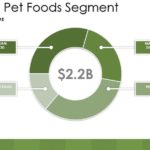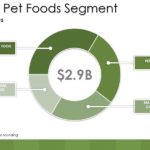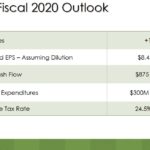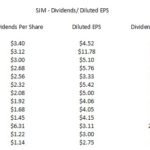Contents
The J. M. Smucker Company (SJM) released Q4 and FY2019 results and FY2020 guidance on June 6, 2019.
Although SJM is slowly transforming its product portfolio to better match consumer preferences it does not possess any major competitive advantages and faces significant competition.
In my opinion there are far better companies in which you can invest.
Summary
- SJM lacks pricing power, and therefore, margins can be severely affected by the erratic changes of raw materials (eg. coffee, peanuts, and meat).
- SJM is slowly transforming its product portfolio to better match consumer preferences.
- Competition is fierce and SJM does not possess major competitive advantages.
- Shares were reasonable valued at the time of my November 28, 2018 article but now appear overvalued.
- I intend to employ the use of out-of-the-money covered calls again but with talk of the Fed cutting interest rates within the next 2 -3 months which could result in a broad increase in equity prices I will hold off on writing covered Calls.
- There are far better companies than SJM in which you can invest.
Introduction
This article touches upon The J.M. Smucker Company’s (SJM) Q4 and FY2019 results and FY2020 guidance.
Following the purchase of SJM shares for the ‘Core’ Accounts within the FFJ Portfolio I have written a number of articles regarding this company. In some of these articles I disclosed that I was of the opinion shares were overvalued and thus had taken the opportunity to write out-of-the-money covered calls to generate additional income; the option income derived from the occasional use of covered calls is almost equivalent to the quarterly dividend income derived subsequent to initiating a position in SJM in mid-2017.
With SJM having closed at $124.49 on June 6th I see the following Bid prices for October 18, 2019 Calls:
- $130 strike $4.10
- $135 strike $2.55
- $140 strike $1.45
Should you own the underlying shares and wish to generate additional income you could, for example, write $135 Calls. For each contract you would receive $255 so if you own at least 400 SJM shares and elect to write 4 contracts you would receive $1,020 before option fees).
Should SJM’s share price be below $135 come expiry, you would retain the option premium you collected at the time you wrote your covered Calls.
If it looks like SJM shares could close above $135 come expiry, you would close out your position (buy back the Calls you wrote) shortly before expiry. Since you still own the underlying shares you could write new covered Calls for an expiry further into the future and at a higher strike price. The premium you collect for the new covered Calls could very well cover your cost of buying back the $135 October 2019 Calls you close.
If you are of the opinion the Fed could cut interest rates as soon as this summer given the recent release of weakening US economic data then you may wish to hold off on writing covered calls. The reason I suggest this is that lower interest rates might give US equity markets a boost and SJM’s share price could get caught in a broad market uptick.
I fully intend to employ the use of covered Calls again but I don’t think now is the appropriate time. I will, however, monitor any new developments around a potential rate cut in the hopes of being able to re-employ the use of covered Calls.
Business Challenges
In my November 28, 2018 article I indicated I was employing patience with SJM. Looking at the company’s historical performance in recent years we see that it has experienced headwinds which have translated into less than stellar results; it has lost pricing power in key categories (eg. oils, peanut butter, fruit spreads).
SJM, however, is a company that is undergoing a transformation and the product portfolio is slowly being realigned to better match consumer preferences (shift to fresh unprocessed foods).
In FY2019, the reshaping of SJM’s portfolio included the acquisition and integration of Ainsworth Pet Nutrition; this area of the business achieved 20% YoY sales growth. Through this acquisition, SJM acquired the Rachael Ray Nutrish (‘Nutrish’) brand which is in the high-growth premium pet food segment. This business has been identified as having significant growth potential and it enables SJM to expand from dog food to cat food.
The following show the extent to which SJM’s US Retail Pet Foods segment has grown over the past year. Note the growth in the Premium Pet Food category where profit margins are higher.
Source: SJM Q4 2018 Earnings Presentation – June 7 2018
Source: SJM Q4 2019 Earnings Presentation – June 6 2019
In addition to acquiring higher margin businesses and brands, SJM has divested itself of its U.S. baking business. By extricating itself from slow growth and lower margin businesses SJM can increase its focus and resources on higher growth categories.
Q4 and FY2019 Financial Results
SJM’s Q4 and FY2019 Earnings Results released June 6th can be accessed here and its Earnings Presentation can be accessed here.
SJM continues to strengthen its approach to innovation; it has delivered $0.42B of net sales from products launched in the last 3 years.
In the 2nd half of FY2019, SJM experienced increased momentum in its results with FY2019 net sales having increased ~7% to over $7.8B; this growth was driven by the acquisition of Ainsworth. If we exclude the Ainsworth acquisition, the divestiture of the U.S. baking business and foreign exchange, however, net sales were in line with FY2018.
SJM’s growth brands grew 16% in Q4 led by Nutrish, Dunkin’ and Cafe Bustelo. Leading and core brand sales declined slightly, primarily due to planned lower pricing for the Folgers brand corresponding with coffee commodity prices.
The 7% increase in adjusted gross profit aided in the reinvestment in SJM’s brands through increased marketing; total marketing spend was ~$35 million higher than Q4 2018.
Adjusted EPS exceeded management’s expectations growing 8%; a significant contributor to this increase was SJM’s lower tax rate.
In addition, the adjusted EPS growth was favorably impacted by the Ainsworth acquisition and the achievement of acquisition synergies and cost reduction goals.
Full year adjusted EPS of $8.29 exceeded guidance of $8 - $8.20 and free cash flow (FCF) of $0.781B also exceeded guidance of $0.7B - $0.75B.
When we compare SJM’s Q1 2019 Balance Sheet (July 31, 2018) with that as at Q4 2019 (April 30, 2019) we see that SJM repaid ~$0.8B of debt in FY2019.
2020 Guidance
Guidance for fiscal 2020 is as follows:
Source: SJM – Q4 2019 Earnings Presentation – June 6 2019
EPS growth is expected to be realized in the 2nd half of FY2020 with the 1st half slightly below or equal to FY2019.
Key assumptions affecting projected cash flow include depreciation and amortization expenses of ~$0.215B - $0.235B, share-based compensation expense of $30 million, one-time costs of $20 million which are mostly cash related and associated with the Ainsworth acquisition.
Credit Ratings
Moody’s continues to rate SJM’s long-term unsecured debt Baa2 (middle tier of the lower medium grade category). S&P Global continues to rate it BBB (the middle tier of the lower medium grade category); this is one tier lower than Moody’s rating. Neither rating is under review.
Free Cash Flow (FCF)
The following reflects SJM’s FCF relative to Revenue going back to 2007.
Despite a slight deterioration in SJM’s FCF relative to FY2018, I continue to feel comfortable with the degree of FCF generated.
Valuation
At the time of my August 21, 2018 article, projected FY2019 adjusted EPS was in the range of $8.40 - $8.65. With SJM trading at ~$109.50 I arrived at a forward adjust PE range of ~12.66 - ~13.04. I indicated at the time that since SJM is undergoing a significant transformation I was reluctant to compare this forward PE range with SJM’s 5 year historical PE of ~24.
In my November 28, 2018 article, I noted that SJM’s projected FY2019 adjusted EPS range had been lowered to $8.00 - $8.20. SJM was trading at ~$101 thus giving us a forward adjusted PE in the range of ~12.32 – ~12.63.
Fast forward to June 7, 2019 and adjusted EPS guidance is $8.45 - $8.65. Shares closed at $124.53 giving us a forward adjusted PE of ~14.40 - ~14.74.
Using SJM’s $7.12 - $7.31 FY2020 guidance on a forward UNADJUSTED diluted EPS basis and the current $124.53 share price we get a forward diluted PE of ~17.04 - ~17.49.
SJM’s historical PE level has been all over the map in recent years (18.11, 15.41, 19.4, 19.92, 19.63, 18.49, 37.95, 20.89, 25.10, and 7.94 in FY2009 – FY2018).
Although changes are being made to realign SJM’s portfolio given the changes in consumer preferences as they switch to fresh, natural, and organic selections, SJM faces significant headwinds and I would be hesitant to assign a valuation similar to that of FY2009, 2011 – 2014; I do not view the valuation levels of 2015 – 2018 as being appropriate levels to use in the determination of SJM’s current valuation.
In my opinion, with the headwinds SJM faces, I think a PE of ~16 is more reasonable. Using this level and management’s forward diluted EPS guidance of $7.12 - $7.31 it would appear a price of ~$117 or lower would be a fair value for SJM.
Dividend and Dividend Yield
As I compose this article I see that SJM’s dividend history found here has not been updated since the end of 2018. We do know, however, that SJM distributed a $0.85 dividend on March 1st and $0.85 on June 3rd. At $3.40/year and a current $124.53 stock price, SJM’s dividend yield is ~2.73%.
Looking at SJM’s historical dividend track record I anticipate that in mid-July SJM will announce at least a $0.04 quarterly increase in its dividend to $0.89. Using a forward annual dividend of $3.56 we arrive at an estimated forward dividend yield of ~2.86%.
Final Thoughts
In my November 28, 2018 article I concluded with a recommendation that you invest in companies such as Visa (V), Mastercard (MA), or Microsoft (MSFT) as opposed to SJM. My opinion has not changed.
SJM operates in a highly competitive environment and it does not have competitive advantages that set it apart from the competition. On a positive note, it is encouraging that SJM is transforming its portfolio to better match consumer preferences.
I am willing to patiently wait to see how the changes impact SJM’s performance but, at the same time, would like to increase the level of income generated from my SJM holdings. I fully intend to employ the use of out-of-the-money covered Calls as in the past. With the looming possibility of an interest rate cut within the next 2 – 3 months which could boost US equities, however, I will refrain from initiating any covered calls at this stage.
I hope you enjoyed this post and I wish you much success on your journey to financial freedom.
Thanks for reading!
Note: I sincerely appreciate the time you took to read this article. Please send any feedback, corrections, or questions to [email protected].
Disclaimer: I have no knowledge of your individual circumstances and am not providing individualized advice or recommendations. I encourage you not to make any investment decision without conducting your own research and due diligence. You should also consult your financial advisor about your specific situation.
Disclosure: I am long SJM, V, MA, and MSFT.
I wrote this article myself and it expresses my own opinions. I am not receiving compensation for it and have no business relationship with any company whose stock is mentioned in this article.







